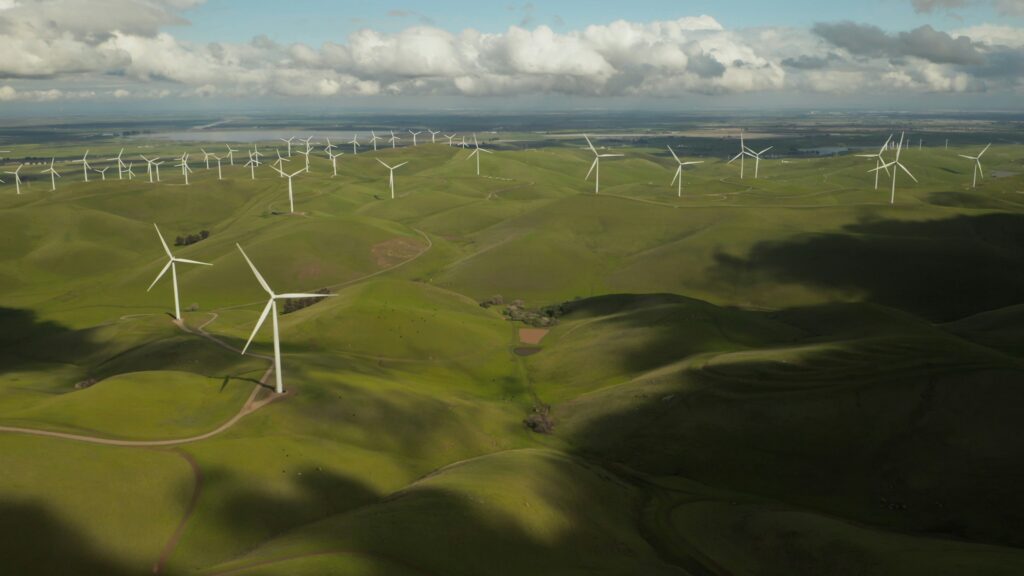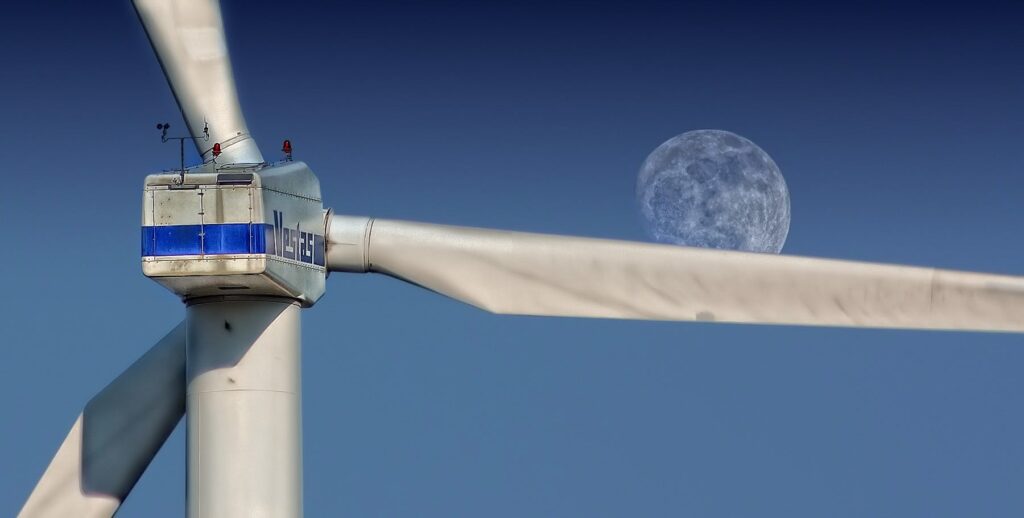Imagine a way to not only generate clean, renewable energy, but also reduce the amount of pollution in the atmosphere while doing so.
That’s the vision of BomVento, a young Israeli startup developing a special coating for the blades on wind turbines that will extract greenhouse gasses (GHG) from the air even as the massive machines themselves generate power.
“As you approach the problem of global warming, it’s clear that today there are targets for reducing emissions, but they are not being met systematically for economical, geopolitical reasons,” BomVento co-founder and CEO Yuri Tsitrinbaum tells NoCamels.
As such, he explains, solutions that in the past had seemed “ridiculously irrelevant,” such as the removal of GHG from the atmosphere, are being increasingly seen as a viable option.
“If we can’t really control emissions, we need to control what’s in the atmosphere,” he says. “And another way to manage that is by reducing greenhouse gasses from the atmosphere.”
An April 2023 report by the US National Oceanic and Atmospheric Administration found that greenhouse gasses have reached historically high rates of growth and that atmospheric carbon dioxide is now 50 percent higher than pre-industrial levels.

One of the greatest challenges of reducing the concentration of greenhouse gasses in the atmosphere was the expense, Tsitrinbaum says.
The cost per ton of greenhouse gasses removed must be under $100 to be viable, he explains. But according to David Webb, the chief sustainability officer at Boston Consulting Group, one of the “big three” strategy consulting firms in the world, the current cost is $600-$1,000 per ton.
Furthermore, Tsitrinbaum says, it has proven to be extremely difficult to scale up any solution for removing GHG from the atmosphere.
“If you can only do it on a very small scale, that’s meaningless,” he says. “It’s not enough to reduce 1,000 or 2,000 tons.”
And it is these two issues that the BomVento solution seeks to address.
The company says that its coating would bring the cost of removing GHGs from the atmosphere to less than $50 per ton. And the increasing number of wind turbines in use across the world means that there is no shortage of blades to cover. More than 90 percent of the turbines are onshore, but the International Energy Agency (IEA) predicts that the number of offshore wind farms will increase around the world in the coming years as more countries move to adopt the technology.
Wind power today generates 10 percent of global electricity, according to the World Wind Energy Association, with a 12 percent rise in the amount of power created in 2023.
In fact, the IEA is calling for an average annual growth of 17 percent in order to be on track with the plan laid out in the 2016 Paris Agreement on climate change to reach net zero emissions by 2050.
The startup’s solution, coating the blades of turbines with a patented material that triggers a chemical reaction through photocatalysis (using light exposure to create the sought-after effect).
“It’s a chemical process that allows us to reduce a greenhouse gas into an environmentally benign product,” Tsitrinbaum says.
Sign up for our free weekly newsletter
SubscribeThe light source to trigger the chemical reaction, which breaks up greenhouse gasses such as carbon dioxide and nitrous oxide into benign separate elements, would be placed at the base of each wind turbine, and require about five percent of the energy the machine creates.

He compares the process to that of a catalytic converter, the chamber installed in every non-electrical vehicle that he says reduces the amount of emissions by up to 70 percent.
“We’re applying a close enough process to large volumes of atmospheric air,” he says.
Tsitrinbaum predicts that each turbine using the BomVento solution could conceivably remove up to 10,000 tons of GHGs per year. And with some 300,000 turbines currently in use globally, that translates to a potential 3 billion tons of GHGs being extracted from the atmosphere annually.
The Tel Aviv-based company was established in 2022, after Tsitrinbaum says he came to the conclusion that he could do more to contribute outside of the nonprofit ecosystem.
“I decided that business as a driver for change is more sustainable,” he says, which led him to the renewable energy sector. He worked for several years for a company that provides renewable energy in emerging markets before setting up BomVento.
“I felt that this is the right time in terms of my maturity, experience [and] financial backbone to go into my own entrepreneurial journey,” he says.
While there are a multitude of companies working to reduce the amount of GHGs in the atmosphere, there are no others developing a solution akin to the one devised by BomVento.
Even so, Tsitrinbaum recently told a German magazine, given the gravity of the problem, they should not be seen as rivals but rather as fellow travelers working towards a shared goal.
BomVento is a member of the startup ecosystem at the Israeli National Center of Blue Economy and Innovation, which focuses on innovative marine technologies, and in 2023 it was named a finalist in the Israeli Climate Awards held by Calcalist business website and Doral Energy-Tech Ventures.
Tsitrinbaum believes it will take a year and half to fully develop proof of concept and another two and a half years before the coating is ready for commercial purposes.
The company has previously received backing from the “amazing” Center of Blue Economy, as well as a grant from the Israeli Ministry of Innovation, Science and Technology and investment from a venture capital firm, all of which will support it as it reaches the proof of concept stage.
Now, BomVento is seeking future funding as it makes what Tsitrinbaum calls the “significant leap” to what it believes can be done.
Related posts

Harnessing Our Own Bodies For Side Effect-Free Weight Loss

Israeli Device Is New, Drug-Free Solution For Men Coping With ED





Facebook comments